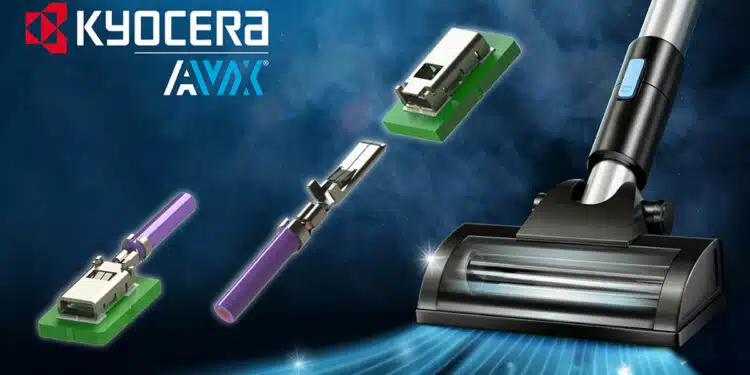KYOCERA AVX, a leading global manufacturer of advanced electronic components engineered to accelerate technological innovation and build a better future, released the new 9140-000 Series two-piece STRIPT® crimp contacts.
Engineered to provide compact, reliable wire-to-board connections in commercial and transportation lighting, home appliance, consumer electronics, and industrial applications with space constraints ranging from densely populated boards to small form factors, the new 9140-000 Series features a UL-approved insulator-less design that utilizes the company’s industry-proven poke-home blade contact technology and measures just 4.6mm x 2.4mm x 1.2mm (L x W x H).
In addition to being compact and low-profile, the new two-piece STRIPT crimp contacts are user friendly and reliable, featuring a polarized design that prevents mis-mating, proven poke-home contacts that provide up to 40N of retention force and require as little as 6N of insertion force, and a latch that maintains high-retention-force terminations in high-shock and -vibration environments.
The new 9140-000 Series two-piece STRIPT crimp contacts accommodate 22–28AWG wires and are rated for up to 8A, 600VACRMS or the DC equivalent, and operating temperatures extending from -40°C to +125°C. They also feature pure-tin-plated copper alloy receptacles and tin-over-nickel plated brass blade contacts and comply with UL, REACH, and RoHS standards and regulations.
“We’re developed the new 9140-000 Series two-piece STRIPT crimp contacts to fill a gap in the market, so we’re very excited for their release,” said Nick Lee, Product Manager – Interconnect, KYOCERA AVX. “They’re the first two-piece crimp contacts in our STRIPT range and, compared to traditional two-piece crimp connectors, have smaller form factors, higher current ratings, and a unique combination of high retention force and low insertion force requirements.”































